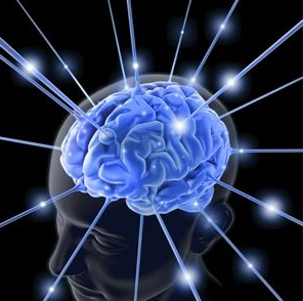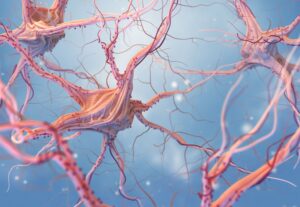I am an Indian American woman born and raised in the Bay Area. Both of my parents immigrated here in the 1970’s as physicians. I, too, am a physician (as is often the case in Indian physician families). But I decided to pursue a field of medicine not often entered by Indian doctors. I am a psychiatrist.
I recently completed my residency training at Stanford University, and have co-founded a group psychiatric practice in Los Altos, CA named Savant Care, Inc. Our practice aims to innovate in the field of mental health using cutting-edge technology, including but not limited to 3D presence remote psychiatry and symptom and side effect tracking over time using smartphone sensors and app-based rating scales. We also hope to decrease social stigmas associated with mental illness by educating the public about relevant psychiatric issues through local writing and speaking.
The South Asian community, both in the Bay Area and nationwide, is one setting where stigmas about psychological issues have proven time and again to be an enormous barrier to the appropriate understanding and utilization of mental health care. Indian culture tends to conceptualize symptoms like depression and anxiety as emotional reactions to external circumstances, rather than as internal problems that require professional treatment. The mentally ill are often called “crazy,” “mad,” or “weak within our culture, which makes those with psychiatric problems all that more reluctant to seek not only emotional support within one’s family but also professional treatment in the community. Pursuing psychological services may stigmatize not only the person in need, but the entire family as well, which may jeopardize future alliances for marriage, etc.(i) Moreover, physical symptoms are considered more pressing and valid than emotional ones, and accordingly, South Asians with mental illness tend to seek treatment more often from their primary care doctors for bodily complaints rather than specialty services for mental health.
Stigmas about mental illness in the South Asian community are perpetuated by a lack of understanding of these diseases and how they specifically manifest within the context of our unique immigrant experience. With our model minority status, our strong family and moral values, and our heavy emphasis on educational success, Indians in the U.S. have unique acculturation pressures that can lead to a slew of specific emotional issues and barriers to treatment. Unfortunately, there are very few medical studies that look specifically at South Asian mental illness in the US. I hope to shed some light on what little is known about South Asian mental health in the US. by reviewing the available literature and reflecting on my own experiences as a treatment provider.
South Asians, as a stereotypical “model minority,” are held to high standards of social success and personal morality within American society. This may lead to a remarkable denial of emotional and psychiatric problems among us, which in turn results in very low rates of mental health treatment. However, South Asians in the U.S. don’t have lower levels of mental illness. In fact, studies indicate that Indian youth, particular young women (ages 15-34), are at an increased risk for self harm behaviors and suicide attempts when compared to whites and other ethnic groups within the U.S. These high rates may be due to family conflict, racism and social isolation. Indian females also tend to be more depressed than their Indian male and white female counterparts.[u] Older South Asians (>40 years of age), both male and female, also present with significant mental illnesses, including major depression, psychosis and anxiety. Interestingly, this age group typically seeks care from primary care doctors for somatic manifestations of their psychological distress rather than directly from mental health professionals.
Addiction may actually be more common among South Asians in the U.S. than one might think. Mental health providers, myself included, note that Indian youth commonly abuse alcohol or drugs, but usually don’t seek help unless they get into trouble with the law or at school or the workplace. Parents also tend to turn a blind eye to the problem if their children are doing well academically.
“Stress” is a common complaint amongst South Asians below age 30. This stress relates primarily to dating, attaining a sense of belonging with non-Indian peers, and balancing the desire for autonomy with the need for parental approval and support. Indian parents want their children to succeed within Western culture but also worry that they will abandon their culture of origin. Some youngsters attempt to cope with these conflicting pressures by adopting a “dual identity-one at home and another in public-but this can lead to emotional disarray. Studies indicate that Indian youth who have parents with a separated or marginalized style of acculturation tend to report higher family conflict, lower self- esteem, more anxiety and more drug abuse than those with parents with a more integrated acculturation style. In other words, the greater the acculturation gap between children and their parents, the more the distress experienced by the children.lv In some circumstances, young South Asians date in secret due to fear of parental disapproval, and this secrecy can create obvious psychological strain.
Stress may also come in the form of parental expectations for academic excellence. Emphasis on education is deeply ingrained in Indian culture and continues to be a strong cultural force today, particularly in South Asian communities in the U.S. This tendency dates back to ancient days when Brahmins, at the top of the traditional Indian caste system, were exalted for their knowledge. British colonialism strengthened this cultural drive for educational achievement, as only English proficient and erudite civilians were appointed coveted administrative jobs with the British Raj. Modern times have done away with the closed heirarchy of the caste system, and have allowed for social mobility primarily through educational development, South Asians who have immigrated to America (whether in the wave during the 1970’s or more recently), moreover, have come here not to escape persecution but to have a better life. Such opportunity, they believe, can only be realized through hard work and professional success.
Indian adolescents commonly report feeling familial obligation to succeed in order to enhance the prestige of their parents or family. More “traditional fields like medicine and the sciences are highly valued amongst South Asian parents and those students who choose to study non-science subjects have reported parental dissatisfaction with their careers. Children who either do not have the interest or the abilities to excel academically may grow up feeling like a failure, and such low self-esteem has been correlated with addiction and other problematic behaviors.
As a psychiatrist of South Asian descent, I am familiar with the unique set of pressures and barriers to psychiatric treatment experienced by Indians living in the US. Increasing awareness of mental health issues can soften stigmas and encourage the pursuit of necessary psychological treatments, and hence is paramount in ensuring the mental well-being of our population both now and in the generations to come.
Sonia Parikh, MD is a Stanford University trained adult psychiatrist and co-founder of Savant Care, Inc., which is a group psychiatric practice located in Los Altos that aims to innovate in the field of mental health using cutting-edge technology. For more information, call 650-690-2362 or visit savantcare.com.
- Karasz A. Cultural differences in conceptual models of depression. Soc Sci Med (2005) 7: 1625-1635.
- Rastogi M, Suthakaran V. The SAPHA Papers: Mental Health Journal of South Asian American Public Affairs (2004) 1:4.
- Rastogi P, Kushalani S, Dhawan S, et al. Understanding clinician perception of common presentations in South Asians seeking mental health treatment and determining barriers and facilitators to treatment. Asian Journal of Psychiatry (2014) 7:15-21.
- Rastogi P, Kushalani S, Dhawan S, et al. Understanding clinician perception of common presentations in South Asians seeking mental health treatment and determining barriers and facilitators to treatment. Asian Journal of Psychiatry (2014) 7:15-21.
- Farver JA, Narang SK, Bhadha BR. East meets west: ethnic identity, acculturation, and conflict in Asian Indian families. Journal of Family Psychology (2002) 16: 338-50
- Bhattacharya G, Schoppelrey SL. Preimmigration beliefs of life success, postimmigration experiences, and acculturative stress: South Asian immigrants in the United States. Journal of Immigrant Health (2004) 6: 83-92.
- Rastogi P, Kushalani S, Dhawan S, et al. Understanding clinician perception of common presentations in South Asians seeking mental health treatment and determining barriers and facilitators to treatment. Asian Journal of Psychiatry (2014) 7: 15-21.




